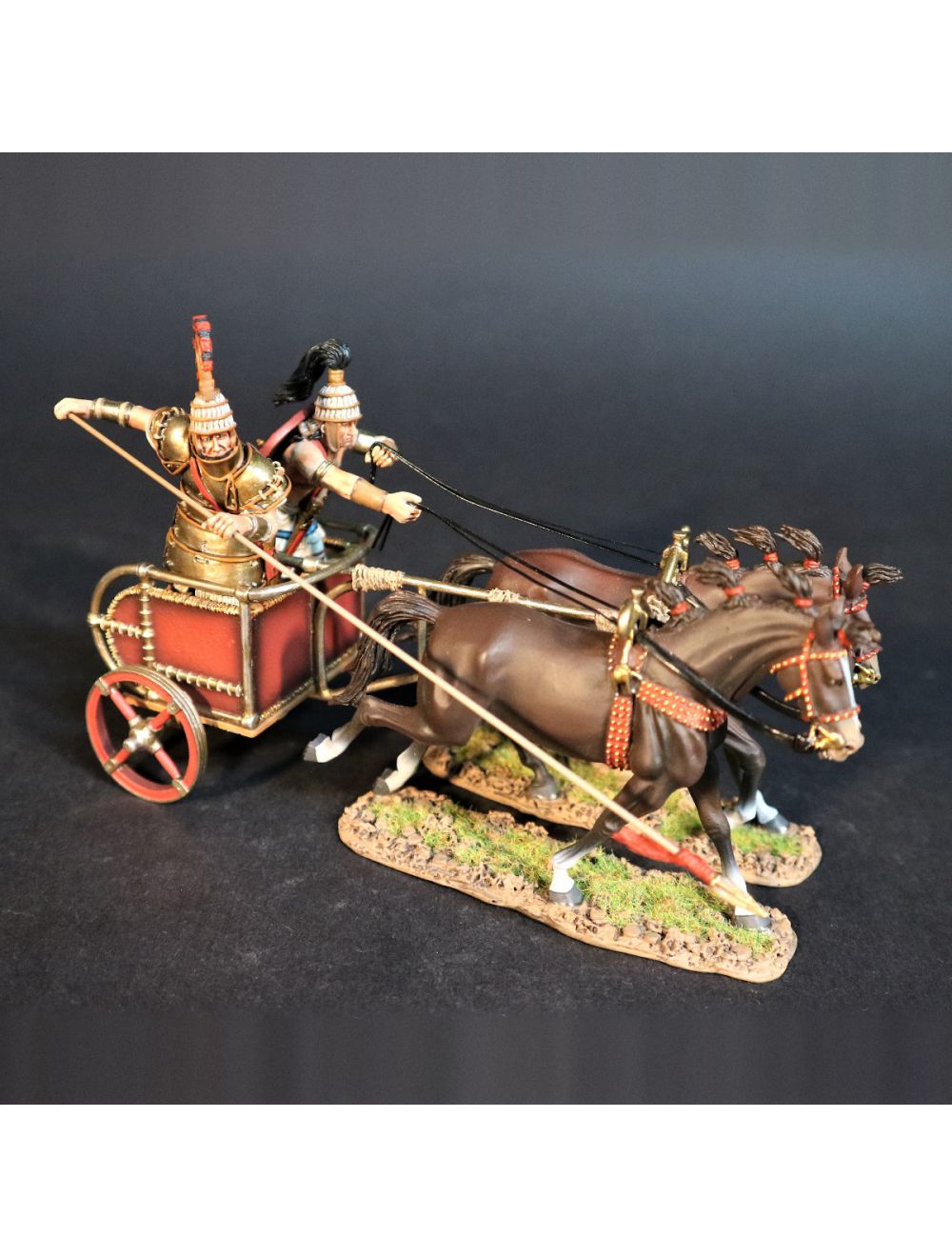JJ-TWG-30 - Antilochus of Pylos
Antilochus was the son of king Nestor, and the brother of Thrasymedes. He accompanied his father and his brother to the Trojan war. He was distinguished for his beauty, swiftness of foot, and skill as a charioteer.
Though he was among the youngest of the Greek princes, he commanded the Pylians in the war and performed many deeds of valour. He was a favourite of the gods and a friend of Achilles, to whom he was commissioned to announce the death of Patroclus. When his father Nestor was attacked by Memnon, Antilochus sacrificed himself to save him, thus fulfilling an oracle which had warned to “beware of an Ethiopian”.
Traditionally, the Trojan War arose from a sequence of events beginning with a quarrel between the goddesses Hera, Athena and Aphrodite. Eris the goddess of discord, was not invited to the wedding of Peleus and Thetis, and so arrived bearing a gift. A golden apple, inscribed “for the fairest”.
Each of the goddesses claimed to be the “fairest”, and the rightful owner of the apple. They submitted the judgement to a shepherd they encountered tending his flock. Each of the goddesses promised the young man a boon in return for his favour. Power, wisdom, or love. The youth, in fact Paris, a Trojan prince who had been raised in the countryside, chose love, and awarded the apple to Aphrodite.
As his reward, Aphrodite caused Helen, the Queen of Sparta, and the most beautiful of all women, to fall in love with Paris.
The judgement of Paris earned him the ire of both Hera and Athena, and when Helen left her husband, Menelaus, the Spartan king, for Paris of Troy, Menelaus called upon all the kings and princes of Greece to wage war upon Troy.
Menelaus’ brother Agamemnon King of Mycenae, led an expedition of Achaean troops to Troy and besieged the city for ten years because of Paris’ insult. After the death of many heroes, including the Achaeans, Achilles, Ajax and the Trojans Hector and Paris, the city fell to the ruse of the Trojan Horse.
The Achaeans slaughtered the Trojans, except for some of the women and children whom they kept or sold as slaves. They desecrated the temples, thus earning the wrath of the gods. Few of the Achaeans returned safely to their homes, and many founded colonies in distant shores. The Romans later traced their origin to Aeneas, Aphrodite’s son and one of the Trojans, who was said to have led the surviving Trojans to modern day Italy.
ANTILOCHUS OF PYLOS
Antilochus was the son of king Nestor, and the brother of Thrasymedes. He accompanied his father and his brother to the Trojan war. He was distinguished for his beauty, swiftness of foot, and skill as a charioteer.
Though he was among the youngest of the Greek princes, he commanded the Pylians in the war and performed many deeds of valour. He was a favourite of the gods and a friend of Achilles, to whom he was commissioned to announce the death of Patroclus. When his father Nestor was attacked by Memnon, Antilochus sacrificed himself to save him, thus fulfilling an oracle which had warned to “beware of an Ethiopian”.
Antilochus’ death was avenged by Achilles, who drove the Trojans back to the gates, where he is killed by Paris. His ashes, along with those of Achilles and Patroclus, were enshrined in a mound on the promontory of Sigeion, where the inhabitants of Ilium offered sacrifice to the dead heroes.
Among the Trojans he killed were Melanippus, Ablerus, Atymnius, Phalces, Echepolos and Thoon. At the funeral games of Patroclus, Antilochus finished second in the chariot race and third in the foot race.
From what is known of chariot warfare it is unlikely that the chariots of this era were used in battle en- masse. It seems more probable that a chariot warrior, armed with a round shield and a short spear, would dismount to fight, with his chariot retiring a short way in order to await events.
The traditional Mycenean chariot battle would see the chariots advance into contact with other chariots. The heavily armoured warrior would brace himself levelling his long spear for the inevitable clash with his opponent. As the lines of chariots inter-penetrated, the chariots would veer passed each other, an unlucky warrior having been knocked from his vehicle by a well aimed thrust. The heavy Dendra Panopoly, a suit of armour made from 15 pieces of beaten sheet bronze, would have been worn by the Mycenean warrior.
In the Iliad Nestor delivers a pre-battle speech to the Greek chariotry. He instructs the charioteers to control their teams so they can charge in formation, the warriors to thrust with the spear from their chariot as “the men before your time sacked tower and city”. Nestor is known for reminiscing about his youth, where he had fought battles and gained experience of tactics that were falling out of use. This seemed a suitable opportunity to depict one of Nestor’s sons, in traditional armour, as his father would have previously worn.
Scale: 1/30
Material: Pewter alloy, resin and synthetic fibers
Released Date: October 2022
| Years | Bronze Age |
|---|---|
| Vehicles | Carriages |
| Celebrities | All Celebrities, Militaries |
| Gender | Men |
| Animals | Horses |
| Role | Officers & Leaders |

 Français
Français

